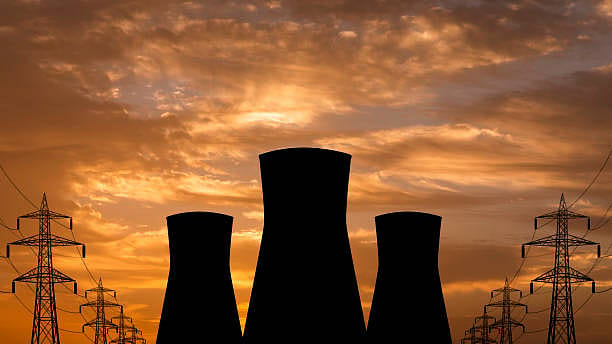Department of Atomic Energy outlines vision for 100 GW nuclear energy by 2047
ADVERTISEMENT

The Department of Atomic Energy (DAE) has outlined pathways for generating 100 gigawatts (GW) of nuclear-powered electricity by 2047 to meet the challenges when India becomes a $30-trillion economy, and to fulfil climate commitments of net-zero by 2070.
India will face a near-tripling of energy demand to 28,000 TWh by 2047, from the current 10,500 TWh, and nuclear energy is poised to play a pivotal role in creating non-polluting energy capacity, said Ajit Kumar Mohanty, Secretary, DAE. The 100 GW nuclear vision entails a diversified approach, incorporating large indigenous reactors, international collaborations, and a significant push for small modular reactors (SMRs) and advanced technologies like fast breeder systems and thorium-based fuels, he said, while addressing a virtual curtain-raiser last week as part of the upcoming Emerging Science, Technology, and Innovation Conclave (ESTIC 2025), a first of its kind event in India.
In the last decade, India’s nuclear electricity generation has increased by about 60%, with installed capacity rising 71% to 8,880 MW. The operating fleet of 25 reactors has consistently maintained a Capacity Factor and Availability Factor above 80% over the past five years. Recently, India commissioned three indigenous 700 MWe pressurised heavy water reactors (PHWRs)—KAPP-3, KAPS-4, and RAPP-7—with 13,100 MWe of additional capacity under construction. A PHWR is a type of nuclear reactor that uses heavy water as both a coolant and a moderator.
The official noted that key policy reforms included the Indian Nuclear Insurance Pool and amendments to the Atomic Energy Act to enable public sector joint ventures. The ASHVINI JV (NPCIL-NTPC) has received siting consent for the Mahi Banswara Rajasthan Atomic Power Plant (MBRAPP) with a 4x700 MWe PHWR project. Environmental clearance was accorded, and the foundation stone was laid on September 25.
December 2025
The annual Fortune 500 India list, the definitive compendium of corporate performance, is out. This year, the cumulative revenue of the Fortune 500 India companies has breached $2 trillion for the first time. Plus, find out which are the Best B-schools in India.
Further initiatives include plans to start 220 MWe ‘Bharat Small Reactors’ to decarbonise hard-to-abate sectors and a ₹20,000-crore Nuclear Energy Mission to deploy five SMRs by 2033, with amendments to The Atomic Energy Act, 1962, and the Civil Liability for Nuclear Damage Act, 2010, planned to enable private participation.
The official said the DAE has a network of six research centres, five PSUs, and aided institutions. Recent achievements include the APSARA-U research reactor, Demonstration Fast Reactor Fuel Reprocessing Plant (DFRP), and a Molybdenum-99 plant for medical isotopes. Radiation technology at the upgraded KRUSHAK facility is enhancing food safety for agri-products like onions and mangoes, with a record 2,500 tonnes shipped to the U.S. in 2023. Strategic projects like the Electronics Grade Boron-11 Enrichment Facility support semiconductor manufacturing, while production of Samarium-Cobalt (Sm-Co) rare-earth permanent magnets and rare-earth metals at BARC, Vizag, continues, said the Secretary, DAE.
At the upcoming ESTIC 2025, a five-pillar energy strategy will be deliberated, positioning nuclear as dependable baseload alongside solar & wind (targeting 10,500 TWh), biomass (3,000 TWh), run-of-river hydro (2,000 TWh), and coal with CCUS (10,000 TWh). The execution framework will ensure and specify who will do what, with which standards, and by when. The focus remains on sustaining high plant performance, advancing SMR pathways, and deepening domestic manufacturing to achieve the Viksit Bharat 2047 vision through technological self-reliance.
